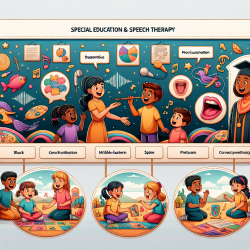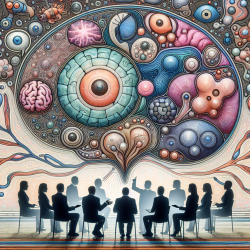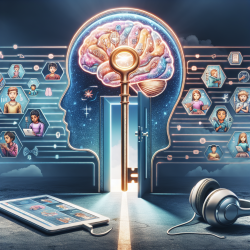Understanding the Brain: A Pathway to Better Outcomes for Children with Dysgraphia and Dyslexia
In the realm of speech-language pathology, the intersection of neuroscience and education offers promising avenues for enhancing learning outcomes for children. A recent study titled Contrasting brain patterns of writing-related DTI parameters, fMRI connectivity, and DTI–fMRI connectivity correlations in children with and without dysgraphia or dyslexia provides critical insights into the distinct brain patterns associated with dysgraphia and dyslexia. This blog aims to explore how these findings can inform clinical practice and encourage further research.
Key Findings from the Research
The study examined children diagnosed with dysgraphia and dyslexia, comparing them to a control group. Using advanced imaging techniques such as Diffusion Tensor Imaging (DTI) and functional Magnetic Resonance Imaging (fMRI), researchers identified significant differences in brain connectivity and white matter integrity among the groups.
- White Matter Integrity: The control group exhibited higher white matter integrity compared to both dysgraphic and dyslexic groups. This integrity is crucial for efficient neural communication.
- Functional Connectivity: Dysgraphic and dyslexic groups showed different patterns of functional connectivity, suggesting distinct neural pathways are engaged during writing tasks.
- DTI-fMRI Correlations: These correlations varied significantly between the groups, indicating different interactions between structural and functional brain networks.
Clinical Implications
Understanding these brain differences is pivotal for tailoring interventions. Here are some strategies practitioners can consider:
- Targeted Interventions: Develop interventions that specifically address the distinct neural pathways involved in dysgraphia and dyslexia. For instance, enhancing white matter integrity through specific exercises could be beneficial.
- Customized Learning Plans: Use insights from brain connectivity patterns to create personalized learning strategies that cater to the unique needs of each child.
- Continuous Monitoring: Implement regular assessments using neuroimaging techniques to monitor progress and adjust interventions accordingly.
Encouraging Further Research
The study underscores the need for ongoing research into the neural underpinnings of learning disabilities. Future studies could explore:
- The impact of specific interventions on brain connectivity over time.
- Longitudinal studies to track changes in brain patterns as children grow and learn.
- The role of genetics in shaping brain connectivity and learning outcomes.
In conclusion, the integration of neuroscience into educational practices holds the potential to transform how we support children with dysgraphia and dyslexia. By leveraging data-driven insights, practitioners can create more effective, personalized interventions that cater to the unique needs of each child.
To read the original research paper, please follow this link: Contrasting brain patterns of writing-related DTI parameters, fMRI connectivity, and DTI–fMRI connectivity correlations in children with and without dysgraphia or dyslexia.










